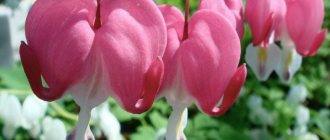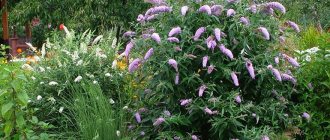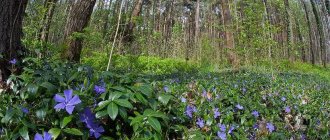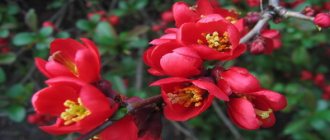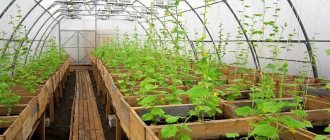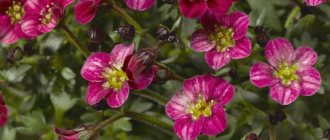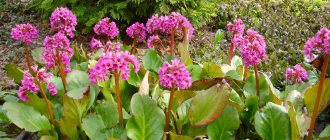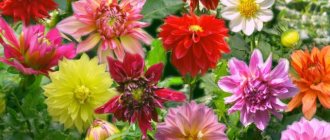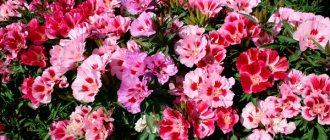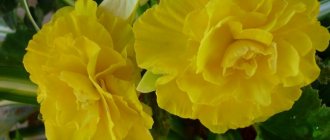Starting in May, beautiful flowering shrubs called deutzia can be found in gardens and parks. This beautiful ornamental shrub captivates with the beauty of its flowers and makes an ideal backdrop for other plants grown in the garden. It has the added benefit of low soil requirements, making it easier to grow. How to propagate and grow deutzia shrubs - planting and care, watering and fertilizers, diseases, as well as types and varieties of plants are discussed in this article.
Types and varieties
Several varieties of this amazing shrub found in the Russian climate.
Deytsia small-flowered, or Amur
The height of the bushes is up to two meters. Five-petalled buds are about 1.2 cm in diameter. There is no smell, the color is white. Flowering of this species lasts 20 days, at the beginning of summer.
Deytsia is magnificent, or lush
The bush reaches one and a half meters. The crown of the plant is spreading and grows quite quickly. Large, three-centimeter flowers form umbrella inflorescences. The color scheme is bright white.
Decorative cultural forms of shrubs:
- Formoza, feature - double buds
- Superba, bell-shaped flowers
- Erecta, the inflorescences of this species are dense
Deytsia rough, or star-shaped
So named because of the rough surface of the leaves. Over time, the crown of the bush becomes more and more spreading. The flowers of this variety do not exceed 1.5 cm in diameter and are white or pink in color. The petals are oblong and pointed at the ends. The inflorescence resembles a narrowed panicle.
Description of the bush
Deutzia is a member of the hydrangea family. This shrub came to us from Central America and East Asia. Despite the impressive number of varieties, gardeners grow only a few of them on their plots. The shrub itself has a unique beauty, and varieties that were specially bred are even more striking in their sophistication and attractiveness.
Elongated, pubescent foliage does not cover the shrub all year round, but only in the warm season. Loose inflorescences consist of white and sometimes pink buds. The shape of these inflorescences resembles clusters. You can admire their beauty for a relatively long time – from spring to August. Thanks to this feature, the plant is considered one of the famous ornamental plants.
Landing
When planting and caring for deutzia in open ground, you should also remember some features of the plant. It is planted from April to mid-summer.
The soil needs to be nutritious and drained, but it should not be too dry. The ground is initially dug up before planting. Next, compost, humus or peat are added - and the soil is prepared.
The depth of the planting pit reaches 0.5 meters. When replanting the plant or replacing the soil, the hole is expanded by another 20-40 cm. The bottom is lined with sand and gravel. The roots of the seedling need to be evenly spread, and the remaining free space should be filled with a mixture of sand, humus and drainage soil.
When planting several seedlings in open ground, maintain a distance of 2.5 meters. The depth at which groundwater will be located should be approximately the same.
Shrubs grown in containers are also inspected. In the case where the roots are intertwined, their lower part needs to be torn apart and trimmed. After the planting process is completed, such bushes are watered with a special solution that stimulates the formation of roots.
Several rules for caring for the action, which, if followed, will lead to the desired result.
Bush formation
To give the bush the correct shape, it needs to be trimmed in a timely manner. You should start caring for the crop in early spring. When the first leaves appear, the condition of the shoots can be assessed. In this case, branches damaged by frost must be removed.
The second pruning is carried out after flowering has completed. During this period, it is necessary to get rid of flower stalks, trim shoots and form a crown. At the same time, it is worth performing anti-aging pruning.
Note! It begins to be carried out from the 5th year of life after landing.
Watering
The regularity of watering the bush in the summer is 2-3 times a week. During the rainy season the number decreases. The action must be carried out when the top soil layer dries out.
After moistening, the surface of the soil next to the plants should be slightly loosened.
The volume of water for one bush is from 15 to 20 liters.
general information
Wild plants are typical for Mexico, the Himalayas, Japan and the adjacent Russian regions of the Far East.
Deutzia grows in almost any soil and does not require complex care. A plant frozen in winter actively grows young shoots within one season, restoring its previous size.
Deytsia
High decorative properties and unpretentiousness have allowed deutsia to occupy its niche in gardens around the world.
Attention! The undeniable advantage of the plant is its flowering immediately after the faded lilac, but before the mock orange and roses, which allows you to create a garden that blooms throughout the entire warm period.
Top dressing
It is an important point in plant care. It is held only three times in one season.
Elementary. Half a bucket of humus per plant.
Second. Liquid fertilizers based on microelements and fertilizers. Feed during flowering time.
Final. Before the bushes are pruned. Mullein is used in a solution with a concentration of 1 to 10. Consumption - 1 bucket per bush.
5. Application in landscape design
Deutia can be used as a border for edging various areas of the garden - in this case, it is worth choosing miniature plants for planting.
Taller shrubs can be planted as hedges. With the onset of summer, they will delight the eye with abundant flowering, and in the fall they will become a bright red accent in any garden.
The resistance of this flowering ornamental shrub to a polluted atmosphere allows the plants to be used in urban landscaping. The plant looks great as a single bright accent or surrounded by other flowering shrubs and herbaceous plants.
↑ Up,
Reproduction
There are several propagation options available. This mainly happens due to:
- seeds,
- layerings,
- divisions
- root shoots,
- Cherenkov.
Seeds
Before planting, you need to prepare loose, waterproof soil for the beds. The condition is also met - the presence of partial shade.
Sowing occurs in the spring. The seeds appear on the surface, but are not sprinkled on top. It is necessary to monitor the level of moisture in the soil and prevent drying out during the germination period.
After three weeks, the first shoots appear. When two pairs of leaves appear, they dive.
When germinating seeds in boxes or boxes, diving still occurs in open ground.
Plants bloom, if all the rules are followed, already in the third year.
Root growth
Large bushes are dug up, divided into approximately two or three parts and planted. Dry and drooping shoots are trimmed and removed before planting.
By separating the root shoots from the main bush, daughter plants are obtained.
Planting takes place in the spring.
Cuttings
Harvesting of young green cuttings occurs from mid-June to July 10. Their length is up to 20 centimeters. Only shoots from this year are suitable.
The temperature in the greenhouses is maintained at 15-30 degrees. Artificial fog is used to maximize the rooting process. As soon as the cuttings begin to germinate, they are transplanted into open ground for up to 2 years.
In winter, the beds are covered with leaves or spruce branches.
Transfer
The procedure is performed while the bush is young and the root system has not grown very much. Adult plants are also replanted, but you will have to act very carefully: carefully and deeply pry up the underground part, having previously dug up the plant along the perimeter of the crown projection. You can’t rush: it’s important to preserve the earthen lump and damage as few fibrous roots as possible.
Deutzia is replanted only in the spring: it takes until autumn for the shrub to take root well in the new area. Effective and safe biostimulants reduce the level of stress during transplantation: Epin, Fitosporin, Zircon. Use the products according to the instructions: before or after transplantation, in the optimal concentration.
